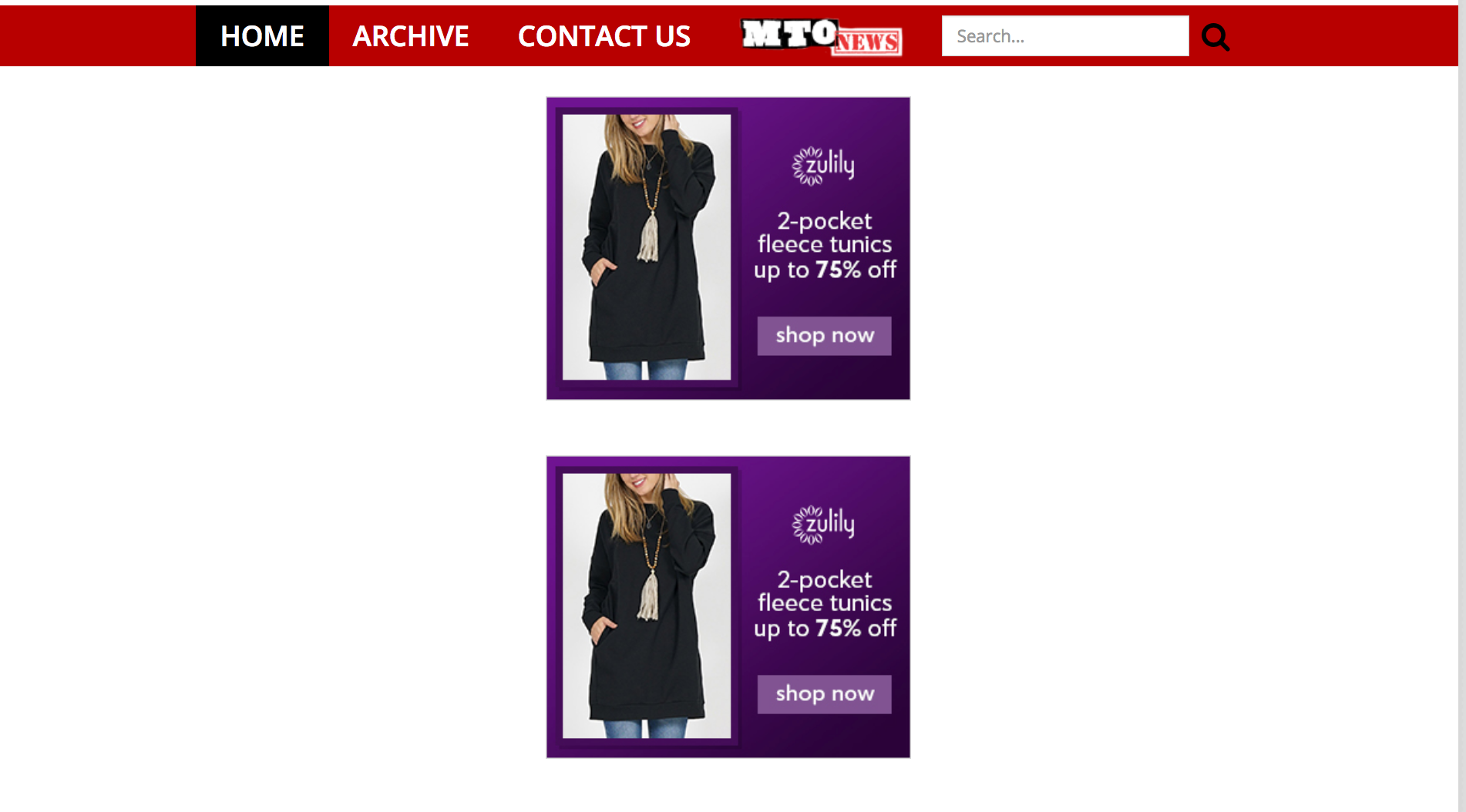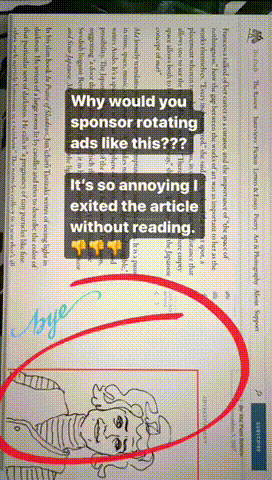
Advertisers & Publishers: Here’s Your 2018 Call to Arms
A few months back, Advertising Weekly published an article on its website titled “The digital ad industry is out of ideas.” Well, when you’re going to make an incendiary assertion like that, then I’d like to see the research you conducted on the issue, and the data you relied on in support of that conclusion. And I guess in one sense that’s what the article’s author, Mike Shields, did:
Consider Marc Pritchard, the chief brand officer at Procter & Gamble, who has been on something of a 12-city summer tour decrying the state of ad tech. … “Bottom line, it is time for marketers and tech companies to solve the problem of annoying ads and make the ad experience better for consumers,” Pritchard said.
It gets worse. After briefly covering a handful of industry initiatives over the last decade or so that were intended to do just that — i.e., improve the ad experience for site users — the article concludes that they were all pretty much big fat failures and that’s why they’re not around anymore. What is around, according to Shields and the experts he quotes? “Bigger banners,” says one. “[R]eally f***ing big ads,” says another, equally dismissively. Mobile is no better, says a third, because we just “ported over” all the crappy stuff from desktop displays. When I read this article, I had so many things I wanted to say:
- I wanted to defend advertisers against what I saw as terribly unfair criticism.
- At the same time, I wanted to scold advertisers for providing a terrible experience.
- Also, I wanted to be angry at the direction some websites seem to be headed in.
- I wanted to call out our industry for a false initiative that rewarded KPI-driven results over everything else (views, reach, clicks) — like, what metrics actually matter here?
- I wanted to light a fire under publishers — yeah, I mean you: the brand managers, the website managers, web designers, and UX designers for letting your sites get this way in the first place.
- And, yes, I wanted to defend the publishers who need to find a way to make money in a world in which content is free.
In other words, I went a little insane because I guess I want to fix the internet. (Can you blame me, though?). (OK, don’t answer that.) People seem to often think that as an advertiser I am a proponent for websites like this:
Or this:

Right off the bat, let us all come to terms on one key fact: Advertisers are traditionally trained to go after higher reach and more real estate on page. In fact, we are trained, exhorted, and commanded to go after the most real estate for one of our ads without (much) consideration of the impact on the user’s experience. And folks, believe me, there’s a whole lot of impact there we need to consider. For proof, look no further than the rise in consumer use of adblock plugins and apps. Around the world, adblock usage increased by 30% in 2016 alone. Yeah, we’ve come a long way since the first banner ad ever — remember this, from 1994?

Back in 1994, that banner ad on hotwired.com got an insane 44% CTR! That’s right — over forty percent of all visitors clicked on that ad to hear Tom Selleck narrate a future fantasyland where you could actually read books, watch movies, and listen to music — over the web. I KNOW! Crazy, right? What’s even crazier: Today, over 80% of all online users wouldn’t even notice that ad. The whole web has changed since 1994. In terms of sheer numbers, we’re talking about a scale that was literally unimaginable 23 years ago. More people search up stuff on Google every minute than were online in 1994. I mean total numbers of people with internet access, by the way — not people online per minute. And yet. And yet. Banner ads were only slated to increase in the 2017 calendar year. Not only has the banner ad not disappeared, but as a format, it’s being increasingly adopted by advertisers and publishers alike. So Mike Shields is absolutely, 100% correct about the fact that we do, as an industry, seem to be stuck “thinking inside the box”(NB: I hate that saying — but I digress). Yes, it’s also true that the call for moving into integrated advertising and (much) improved UX is growing, but it still needs to be mass adopted.
What’s more, we all need to come together to make this happen. Advertising isn’t evil, and advertisers aren’t the bad guys. Like Paul Marobella, the CEO of Havas Creative US, I love advertising. There’s nothing inherently immoral or wrong in trying to bridge the communication gap between brands and audiences. As advertisers, our vision is one in which advertising is not a distraction, but an aid in everyday life. And as advertisers, our mission must be to remove the noise between the right products/brands and the right users! But what happens when we fail at bridging that gap? What happens when we gobble up digital real estate without regard to the impact on users — you know, the audiences we’re supposedly trying to reach and persuade to do stuff we want them to do? What happens is that we lose those audiences. We lose them to banner blindness and ad blockers and just pure loathing. So this is me, issuing a call to arms for all digital advertising publishers to stand up, shake off the dust, and embrace an actual, collective commitment to doing better. Now, here comes the hard part. What exactly does that mean — “doing better”? Below, I’m going to share what phrase means to me. But first, let me clear from that reasonable minds can and do differ on these strategies. My ideas flow from my (admittedly extensive) experience. Folks with varying backgrounds or areas of expertise or focus can and may have different conclusions about the most effective potential avenues of exploration going forward. Just ask a UX designer what a website should be or look like, vs. a graphics designer vs. an ads manager vs. etc. etc. ad infinitum. So reasonable minds may vary on specific recommendations, but these are mine, and I stand by ‘em:
1. Monetization Strategies at Concept
We need to take a deep breath, and go back to the drawing board on how to value content appropriately from the outset. What’s your website’s ad display space really worth to advertisers? Which models make sense? Careful, there. It might not be the first answer that just popped into your head. I want to say this clearly for all: The old Field of Dreams School of Traffic and Monetization is dead. It’s extinct. You can build it, but that absolutely does not ever mean they will come, much less stick around long enough to generate income for the publisher. That old mentality — “leave some banner space for ads and generate a ton of content” — just won’t work anymore. So what should brands do? Start by evaluating all possible revenue streams from the beginning, and periodically refresh that analysis. One example is https://nowtoronto.com/orientexpress. This is where Now Toronto is partnering with brands to leverage its content team to create content alongside brand partners and then hosting that content on its website. That content looks like any organic post or article, but that page is really a whole section specifically crafted for the display of sponsored editorials and other content, related to one brand.
That’s just one possible tactic. Others could be based on selling content or memberships to targeted prospects. Another option is to create a community around existing traffic that meets a specific audience type that you’d like to grow, then providing value-added services or content to entice existing users to invite others like them. Think beyond literal AdSense revenue to a loftier mission and a longer-term goal: Building a user experience that fits the users and pushes revenue generators naturally.
2. SSP Side Consultants, Especially UX Designer
If you’re going to do ads, for the love of David Ogilvy, don’t be driven solely by profit and fees. Think about your users first. In fact, respect your users and audience. And if you’re using SSP (Supply-Side Platform), hire and listen to consultants who know what they’re talking about. Chief among them, you should grab yourselves an experienced, skilled UX (user experience) consultants. Then you should pay them what they ask for and — and this is key, guys — listen to what they tell you.

If you’re not convinced, then keep this in mind: A better UX is in your best interests. It makes your site more attractive and comfortable for your users. That keeps them on your page longer, which helps them trust you more, which convinces them to click your ads, which gives you a higher CTR, and which also improves your SEO.
3. A Digital Advertising Initiative to Validate Results
Quick question: how do we know a particular ad campaign is effective? We measure its results, right? It’s the same with a fitness goal or improving grades or trimming your run time. You figure out the right metric, and you measure it. That’s fine as far as it goes. On an individual campaign basis, your analytics app or platform metrics will serve you well. But what about evaluating your digital marketing strategies and campaigns collectively? What works? What doesn’t? And more importantly: how can we tell? Evaluating our campaigns on the key metrics for those campaigns is fine, obviously. Any campaign that’s designed to reach a wide audience should first be evaluated on its reach metrics in the target audience demographic. However, it is how we tie these metrics back to a brand’s marketing funnel and its ultimate place in the conversion funnel for its revenue generators that is more important. Here is the overarching question: Are you getting the highest value from those users your ad targeted and reached? To answer that question, you need to have a digital marketing strategy that connects all the pieces. The bonus advantage here is that this very strategy prevents you from relying solely on the types of vanity metrics that advertisers have become used to trading in, within the ad landscape. We need an industry-wide initiative to validate our results for all the tools in our toolbox. We need wide, diverse, ongoing commitment to participation in this initiative so we can trust those results. And then we need to pay attention to those results. Do more of what works, less of what doesn’t. It’s that simple. (Please note: I did not say “that easy.”)
4. Better DSP Side Offerings and Placements
Demand Side Platforms unquestionably made digital advertising products cheaper and easier to procure for advertisers. Let’s start there. Then let’s agree that we can do better for the advertisers on these networks. Yes, DSPs are convenient, allowing advertisers to purchase blocks of ads across a variety of publisher sites, which in turn lets them optimize those ads more quickly, thus making them more responsive and ultimately more effective. But it’s my belief that DSPs can do better in terms of the types of ads they allow advertising brands to use and display. For example, some platforms use Flash-based ads, but no HTML5. (Seriously?) Others just don’t do interactive ads that connect the brand’s inventory to the ad content. Another area in which DSPs can improve is the alignment of displayed ads and the display site’s UX. Here’s one example I ran across recently. Note the rapidly rotating ad content. Why would I stick around on this page? It gave me a headache and I left fairly quickly:

I’m certainly never going to click on that ad! Give advertisers clearer guidelines and regulations for banner ads and sites in the DSP system. Improve the banner capabilities and please, for the love of all that’s holy, pay attention to how those ads interact with the page in question for the user. And a better, intuitive interface for creating more effective ads would be awesome, too.
Final Thoughts
Advertising has come a long way, baby. To be sure, we can improve in many areas as the industry grows and changes. My point here is this: Let’s be proactive in identifying how we are reacting to changing user demands when it comes to UX. Let’s be better than this. We are the experts, and yet we’re stuck reacting to changing consumer perceptions rather than proactively researching consumer pain points and building better solutions around that research. Let’s not forget what it’s like from the user’s perspective. After all, at the end of the day we’re all users when we punch out of that proverbial clock at work. Do we like the experiences we’re having when we’re doing our own shopping, digesting our own content, or sharing with our own community? Chances are, you wouldn’t click that rapidly rotating ad up there, either. We can do better in 2018. We must. — Have some feedback or looking to chat on a specific problem regarding your ads or website experience?

